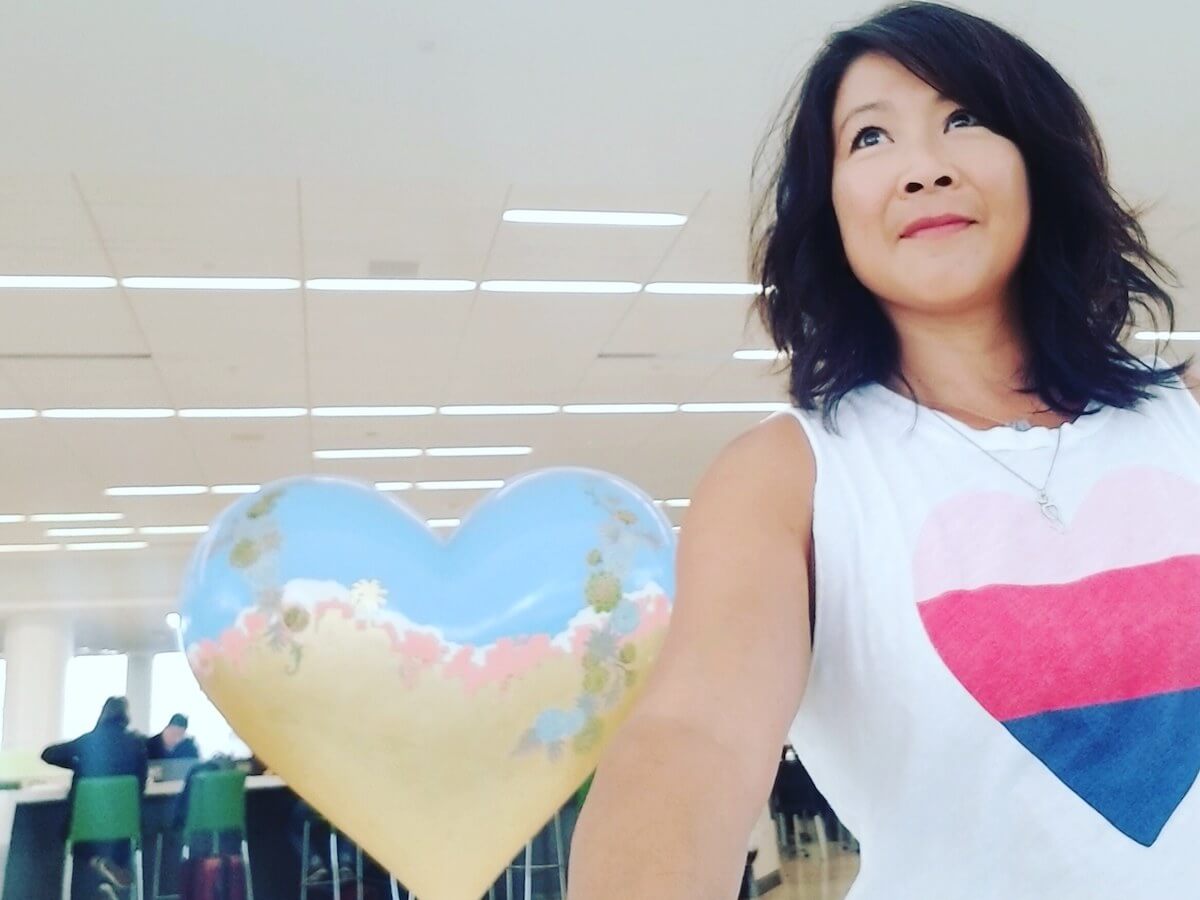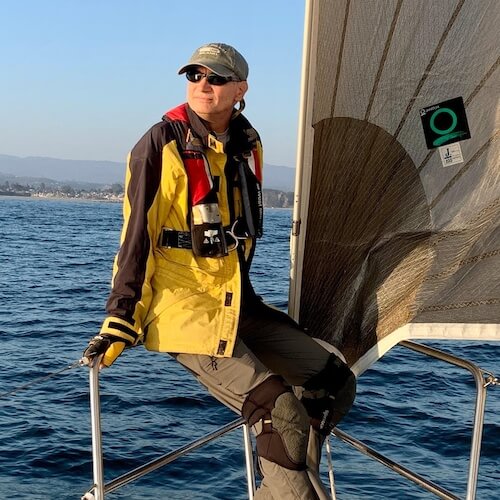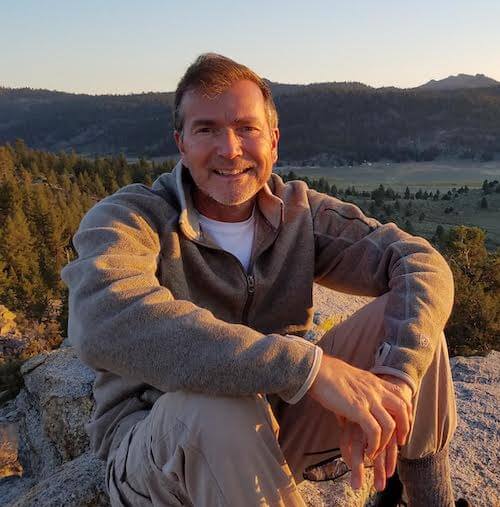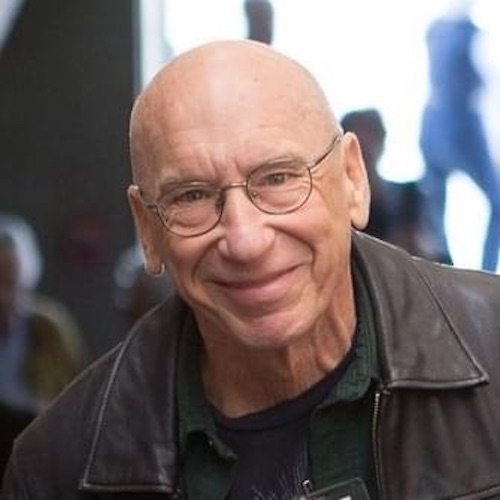
When I was single in my 30s, I searched for a man who would treat me like a goddess. The more I studied yoga and blended in the sister science, Ayurveda, the more I realized this: I need to treat myself like a goddess.
What does that mean, you say? Lustrous hair, shiny adornments, and luxuriating in relaxation? Yes, and… the ancient yogic texts speak of purushartha, the four aims of life: alignment, productivity, pleasure, and detachment. Purushartha is a blueprint for balance and contentment. The most goddess-like people I know experience this balance in many aspects of their lives — less drama, more satisfaction, a whole lot of fun, and fewer regrets.
These days, if I want to treat myself like a goddess, I try to make choices that support my own ability to feel balanced and content. For me, the goddess life means making space to care for myself, so I can be my best self. Hair and adornment are part of that — yes, and…
Let’s explore purushartha in its four stages: dharma, artha, kama, and moksha.
Dharma is living in alignment and asks that you live each day with purpose and from your heart, which brings order and stability to your life. It’s particularly relevant to the first 25 years of your life, when you’re finding your way, learning who you are, and connecting with who you want to be. I had a teacher who used to say, “Don’t show up as anybody but you. Everyone else is taken, anyway.”
How do you do this? Ask yourself: What special gifts can you offer to the world? What are the things you most enjoy doing? When these two things intersect, you connect with your purpose, or dharma. This state of being guides you to conscious action that engages your energy in a way that feels aligned with your deepest self.
Artha is productive living, which is often associated with ages 25-50, a time when many of us are working incredibly hard to be materially secure — a job, a home, savings for yourself, and possibly a family. This is when many of us become fully active, contributing members of society, and when we fill our life chests with knowledge, good health, prosperity, and relationships.
It’s also a time that is intense, focused, and possibly exhausting. If this is where you are, you might be on the fringes of frequent burnout. How much self-care do you give yourself? Do you take constructive rest? Can you make enough money and arrange your financial life so you don’t have to worry about basic needs? No need to be ultra-wealthy. Enough is good.
Kama is pleasurable living, and without it, you can feel empty. After a life of churning, you’re more than ready to give yourself attention that was previously consumed by work or kids. Between the ages of 50-75, you might hear yourself say, “It’s time for me. It’s time to enjoy myself.”
Is there a hobby you’ve always wanted to try? An instrument you’ve always wanted to learn? Since hustle likely dominated the years prior, one of the hardest parts of this pursuit is letting go of who you were to make time for who you will become — not as a productive worker or householder, but as a creative, free being. Are you allowing yourself time to be sensory, artistic, and soulful?
Moksha is detachment living, a time of downsizing and purging chunks of what tethers you to the physical world. During this time in the later years, 75 and on, you’re setting yourself up to be liberated, less weighed down — physically, mentally, and spiritually.
Envision moving out of your metaphorical house into a smaller place with fewer material things and obligations. You embrace your intelligence and wisdom, sharing it freely and kindly with others. You are an elder, at one with the universe. You are a presence that is authentic, humble, patient. You are effortlessly where you need to be.
Here’s the thing.
No one state exists without the others. None is isolated to a specific time period. Purushartha poses the question: can the other three pursuits be present in your current life stage? If you’re between 25-50 and working hard to make your name in the world (artha), is your work purposeful (dharma) and pleasurable (kama)? Can you live with purpose, have your basic needs taken care of, enjoy life, and have the wisdom to let go when needed (moksha)? When I’m living all four of these values, I feel like a goddess.
I rely on the yoga and Ayurveda practices of breath, movement, nourishment, and attention to inner/outer beauty daily — treated like rituals, they help me get to a place of clarity. Here, I’m better able to make choices to show up as my whole self, guided by these values in a way that feels authentic and unique to me.
Now, in my 50s, here’s what I know: it’s never too late to pursue a life well-lived. It’s never too late to live a goddess life.

“Remembering to be as self compassionate as I can and praying to the divine that we're all a part of.”
–Aaron
“Prayer, reading, meditation, walking.”
–Karen
“Erratically — which is an ongoing stream of practice to find peace.”
–Charles
“Try on a daily basis to be kind to myself and to realize that making mistakes is a part of the human condition. Learning from our mistakes is a journey. But it starts with compassion and caring. First for oneself.”
–Steve
“Physically: aerobic exercise, volleyball, ice hockey, cycling, sailing. Emotionally: unfortunately I have to work to ‘not care’ about people or situations which may end painfully. Along the lines of ‘attachment is the source of suffering’, so best to avoid it or limit its scope. Sad though because it could also be the source of great joy. Is it worth the risk?“
–Rainer


“It's time for my heart to be nurtured on one level yet contained on another. To go easy on me and to allow my feelings to be validated, not judged harshly. On the other hand, to let the heart rule with equanimity and not lead the mind and body around like a master.”
–Suzanne
“I spend time thinking of everything I am grateful for, and I try to develop my ability to express compassion for myself and others without reservation. I take time to do the things I need to do to keep myself healthy and happy. This includes taking experiential workshops, fostering relationships, and participating within groups which have a similar interest to become a more compassionate and fulfilled being.“
–Peter


“Self-forgiveness for my own judgments. And oh yeah, coming to Esalen.”
–David B.
“Hmm, this is a tough one! I guess I take care of my heart through fostering relationships with people I feel connected to. Spending quality time with them (whether we're on the phone, through messages/letters, on Zoom, or in-person). Being there for them, listening to them, sharing what's going on with me, my struggles and my successes... like we do in the Esalen weekly Friends of Esalen Zoom sessions!”
–Lori

“I remind myself in many ways of the fact that " Love is all there is!" LOVE is the prize and this one precious life is the stage we get to learn our lessons. I get out into nature, hike, camp, river kayak, fly fish, garden, I create, I dance (not enough!), and I remain grateful for each day, each breath, each moment. Being in the moment, awake, and remembering the gift of life and my feeling of gratitude for all of creation.”
–Steven
“My physical heart by limiting stress and eating a heart-healthy diet. My emotional heart by staying in love with the world and by knowing that all disappointment and loss will pass.“
–David Z.
Today, September 29, is World Heart Day. Strike up a conversation with your own heart and as you feel comfortable, encourage others to do the same. As part of our own transformations and self-care, we sometimes ask for others to illuminate and enliven our hearts or speak our love language.
What if we could do this for ourselves too, even if just for today… or to start a heart practice, forever?
Join Christine and Robin Wilner (Esalen’s first Teacher in Residence) for our upcoming workshop: Ayurveda for the Goddess Life, May 7-9, 2021.
Christine Chen is a two-time Emmy winning journalist, best-selling author, California native, and senior teacher of yoga and Ayurveda.

When I was single in my 30s, I searched for a man who would treat me like a goddess. The more I studied yoga and blended in the sister science, Ayurveda, the more I realized this: I need to treat myself like a goddess.
What does that mean, you say? Lustrous hair, shiny adornments, and luxuriating in relaxation? Yes, and… the ancient yogic texts speak of purushartha, the four aims of life: alignment, productivity, pleasure, and detachment. Purushartha is a blueprint for balance and contentment. The most goddess-like people I know experience this balance in many aspects of their lives — less drama, more satisfaction, a whole lot of fun, and fewer regrets.
These days, if I want to treat myself like a goddess, I try to make choices that support my own ability to feel balanced and content. For me, the goddess life means making space to care for myself, so I can be my best self. Hair and adornment are part of that — yes, and…
Let’s explore purushartha in its four stages: dharma, artha, kama, and moksha.
Dharma is living in alignment and asks that you live each day with purpose and from your heart, which brings order and stability to your life. It’s particularly relevant to the first 25 years of your life, when you’re finding your way, learning who you are, and connecting with who you want to be. I had a teacher who used to say, “Don’t show up as anybody but you. Everyone else is taken, anyway.”
How do you do this? Ask yourself: What special gifts can you offer to the world? What are the things you most enjoy doing? When these two things intersect, you connect with your purpose, or dharma. This state of being guides you to conscious action that engages your energy in a way that feels aligned with your deepest self.
Artha is productive living, which is often associated with ages 25-50, a time when many of us are working incredibly hard to be materially secure — a job, a home, savings for yourself, and possibly a family. This is when many of us become fully active, contributing members of society, and when we fill our life chests with knowledge, good health, prosperity, and relationships.
It’s also a time that is intense, focused, and possibly exhausting. If this is where you are, you might be on the fringes of frequent burnout. How much self-care do you give yourself? Do you take constructive rest? Can you make enough money and arrange your financial life so you don’t have to worry about basic needs? No need to be ultra-wealthy. Enough is good.
Kama is pleasurable living, and without it, you can feel empty. After a life of churning, you’re more than ready to give yourself attention that was previously consumed by work or kids. Between the ages of 50-75, you might hear yourself say, “It’s time for me. It’s time to enjoy myself.”
Is there a hobby you’ve always wanted to try? An instrument you’ve always wanted to learn? Since hustle likely dominated the years prior, one of the hardest parts of this pursuit is letting go of who you were to make time for who you will become — not as a productive worker or householder, but as a creative, free being. Are you allowing yourself time to be sensory, artistic, and soulful?
Moksha is detachment living, a time of downsizing and purging chunks of what tethers you to the physical world. During this time in the later years, 75 and on, you’re setting yourself up to be liberated, less weighed down — physically, mentally, and spiritually.
Envision moving out of your metaphorical house into a smaller place with fewer material things and obligations. You embrace your intelligence and wisdom, sharing it freely and kindly with others. You are an elder, at one with the universe. You are a presence that is authentic, humble, patient. You are effortlessly where you need to be.
Here’s the thing.
No one state exists without the others. None is isolated to a specific time period. Purushartha poses the question: can the other three pursuits be present in your current life stage? If you’re between 25-50 and working hard to make your name in the world (artha), is your work purposeful (dharma) and pleasurable (kama)? Can you live with purpose, have your basic needs taken care of, enjoy life, and have the wisdom to let go when needed (moksha)? When I’m living all four of these values, I feel like a goddess.
I rely on the yoga and Ayurveda practices of breath, movement, nourishment, and attention to inner/outer beauty daily — treated like rituals, they help me get to a place of clarity. Here, I’m better able to make choices to show up as my whole self, guided by these values in a way that feels authentic and unique to me.
Now, in my 50s, here’s what I know: it’s never too late to pursue a life well-lived. It’s never too late to live a goddess life.

“Remembering to be as self compassionate as I can and praying to the divine that we're all a part of.”
–Aaron
“Prayer, reading, meditation, walking.”
–Karen
“Erratically — which is an ongoing stream of practice to find peace.”
–Charles
“Try on a daily basis to be kind to myself and to realize that making mistakes is a part of the human condition. Learning from our mistakes is a journey. But it starts with compassion and caring. First for oneself.”
–Steve
“Physically: aerobic exercise, volleyball, ice hockey, cycling, sailing. Emotionally: unfortunately I have to work to ‘not care’ about people or situations which may end painfully. Along the lines of ‘attachment is the source of suffering’, so best to avoid it or limit its scope. Sad though because it could also be the source of great joy. Is it worth the risk?“
–Rainer


“It's time for my heart to be nurtured on one level yet contained on another. To go easy on me and to allow my feelings to be validated, not judged harshly. On the other hand, to let the heart rule with equanimity and not lead the mind and body around like a master.”
–Suzanne
“I spend time thinking of everything I am grateful for, and I try to develop my ability to express compassion for myself and others without reservation. I take time to do the things I need to do to keep myself healthy and happy. This includes taking experiential workshops, fostering relationships, and participating within groups which have a similar interest to become a more compassionate and fulfilled being.“
–Peter


“Self-forgiveness for my own judgments. And oh yeah, coming to Esalen.”
–David B.
“Hmm, this is a tough one! I guess I take care of my heart through fostering relationships with people I feel connected to. Spending quality time with them (whether we're on the phone, through messages/letters, on Zoom, or in-person). Being there for them, listening to them, sharing what's going on with me, my struggles and my successes... like we do in the Esalen weekly Friends of Esalen Zoom sessions!”
–Lori

“I remind myself in many ways of the fact that " Love is all there is!" LOVE is the prize and this one precious life is the stage we get to learn our lessons. I get out into nature, hike, camp, river kayak, fly fish, garden, I create, I dance (not enough!), and I remain grateful for each day, each breath, each moment. Being in the moment, awake, and remembering the gift of life and my feeling of gratitude for all of creation.”
–Steven
“My physical heart by limiting stress and eating a heart-healthy diet. My emotional heart by staying in love with the world and by knowing that all disappointment and loss will pass.“
–David Z.
Today, September 29, is World Heart Day. Strike up a conversation with your own heart and as you feel comfortable, encourage others to do the same. As part of our own transformations and self-care, we sometimes ask for others to illuminate and enliven our hearts or speak our love language.
What if we could do this for ourselves too, even if just for today… or to start a heart practice, forever?
Join Christine and Robin Wilner (Esalen’s first Teacher in Residence) for our upcoming workshop: Ayurveda for the Goddess Life, May 7-9, 2021.

When I was single in my 30s, I searched for a man who would treat me like a goddess. The more I studied yoga and blended in the sister science, Ayurveda, the more I realized this: I need to treat myself like a goddess.
What does that mean, you say? Lustrous hair, shiny adornments, and luxuriating in relaxation? Yes, and… the ancient yogic texts speak of purushartha, the four aims of life: alignment, productivity, pleasure, and detachment. Purushartha is a blueprint for balance and contentment. The most goddess-like people I know experience this balance in many aspects of their lives — less drama, more satisfaction, a whole lot of fun, and fewer regrets.
These days, if I want to treat myself like a goddess, I try to make choices that support my own ability to feel balanced and content. For me, the goddess life means making space to care for myself, so I can be my best self. Hair and adornment are part of that — yes, and…
Let’s explore purushartha in its four stages: dharma, artha, kama, and moksha.
Dharma is living in alignment and asks that you live each day with purpose and from your heart, which brings order and stability to your life. It’s particularly relevant to the first 25 years of your life, when you’re finding your way, learning who you are, and connecting with who you want to be. I had a teacher who used to say, “Don’t show up as anybody but you. Everyone else is taken, anyway.”
How do you do this? Ask yourself: What special gifts can you offer to the world? What are the things you most enjoy doing? When these two things intersect, you connect with your purpose, or dharma. This state of being guides you to conscious action that engages your energy in a way that feels aligned with your deepest self.
Artha is productive living, which is often associated with ages 25-50, a time when many of us are working incredibly hard to be materially secure — a job, a home, savings for yourself, and possibly a family. This is when many of us become fully active, contributing members of society, and when we fill our life chests with knowledge, good health, prosperity, and relationships.
It’s also a time that is intense, focused, and possibly exhausting. If this is where you are, you might be on the fringes of frequent burnout. How much self-care do you give yourself? Do you take constructive rest? Can you make enough money and arrange your financial life so you don’t have to worry about basic needs? No need to be ultra-wealthy. Enough is good.
Kama is pleasurable living, and without it, you can feel empty. After a life of churning, you’re more than ready to give yourself attention that was previously consumed by work or kids. Between the ages of 50-75, you might hear yourself say, “It’s time for me. It’s time to enjoy myself.”
Is there a hobby you’ve always wanted to try? An instrument you’ve always wanted to learn? Since hustle likely dominated the years prior, one of the hardest parts of this pursuit is letting go of who you were to make time for who you will become — not as a productive worker or householder, but as a creative, free being. Are you allowing yourself time to be sensory, artistic, and soulful?
Moksha is detachment living, a time of downsizing and purging chunks of what tethers you to the physical world. During this time in the later years, 75 and on, you’re setting yourself up to be liberated, less weighed down — physically, mentally, and spiritually.
Envision moving out of your metaphorical house into a smaller place with fewer material things and obligations. You embrace your intelligence and wisdom, sharing it freely and kindly with others. You are an elder, at one with the universe. You are a presence that is authentic, humble, patient. You are effortlessly where you need to be.
Here’s the thing.
No one state exists without the others. None is isolated to a specific time period. Purushartha poses the question: can the other three pursuits be present in your current life stage? If you’re between 25-50 and working hard to make your name in the world (artha), is your work purposeful (dharma) and pleasurable (kama)? Can you live with purpose, have your basic needs taken care of, enjoy life, and have the wisdom to let go when needed (moksha)? When I’m living all four of these values, I feel like a goddess.
I rely on the yoga and Ayurveda practices of breath, movement, nourishment, and attention to inner/outer beauty daily — treated like rituals, they help me get to a place of clarity. Here, I’m better able to make choices to show up as my whole self, guided by these values in a way that feels authentic and unique to me.
Now, in my 50s, here’s what I know: it’s never too late to pursue a life well-lived. It’s never too late to live a goddess life.

“Remembering to be as self compassionate as I can and praying to the divine that we're all a part of.”
–Aaron
“Prayer, reading, meditation, walking.”
–Karen
“Erratically — which is an ongoing stream of practice to find peace.”
–Charles
“Try on a daily basis to be kind to myself and to realize that making mistakes is a part of the human condition. Learning from our mistakes is a journey. But it starts with compassion and caring. First for oneself.”
–Steve
“Physically: aerobic exercise, volleyball, ice hockey, cycling, sailing. Emotionally: unfortunately I have to work to ‘not care’ about people or situations which may end painfully. Along the lines of ‘attachment is the source of suffering’, so best to avoid it or limit its scope. Sad though because it could also be the source of great joy. Is it worth the risk?“
–Rainer


“It's time for my heart to be nurtured on one level yet contained on another. To go easy on me and to allow my feelings to be validated, not judged harshly. On the other hand, to let the heart rule with equanimity and not lead the mind and body around like a master.”
–Suzanne
“I spend time thinking of everything I am grateful for, and I try to develop my ability to express compassion for myself and others without reservation. I take time to do the things I need to do to keep myself healthy and happy. This includes taking experiential workshops, fostering relationships, and participating within groups which have a similar interest to become a more compassionate and fulfilled being.“
–Peter


“Self-forgiveness for my own judgments. And oh yeah, coming to Esalen.”
–David B.
“Hmm, this is a tough one! I guess I take care of my heart through fostering relationships with people I feel connected to. Spending quality time with them (whether we're on the phone, through messages/letters, on Zoom, or in-person). Being there for them, listening to them, sharing what's going on with me, my struggles and my successes... like we do in the Esalen weekly Friends of Esalen Zoom sessions!”
–Lori

“I remind myself in many ways of the fact that " Love is all there is!" LOVE is the prize and this one precious life is the stage we get to learn our lessons. I get out into nature, hike, camp, river kayak, fly fish, garden, I create, I dance (not enough!), and I remain grateful for each day, each breath, each moment. Being in the moment, awake, and remembering the gift of life and my feeling of gratitude for all of creation.”
–Steven
“My physical heart by limiting stress and eating a heart-healthy diet. My emotional heart by staying in love with the world and by knowing that all disappointment and loss will pass.“
–David Z.
Today, September 29, is World Heart Day. Strike up a conversation with your own heart and as you feel comfortable, encourage others to do the same. As part of our own transformations and self-care, we sometimes ask for others to illuminate and enliven our hearts or speak our love language.
What if we could do this for ourselves too, even if just for today… or to start a heart practice, forever?
Join Christine and Robin Wilner (Esalen’s first Teacher in Residence) for our upcoming workshop: Ayurveda for the Goddess Life, May 7-9, 2021.
Christine Chen is a two-time Emmy winning journalist, best-selling author, California native, and senior teacher of yoga and Ayurveda.